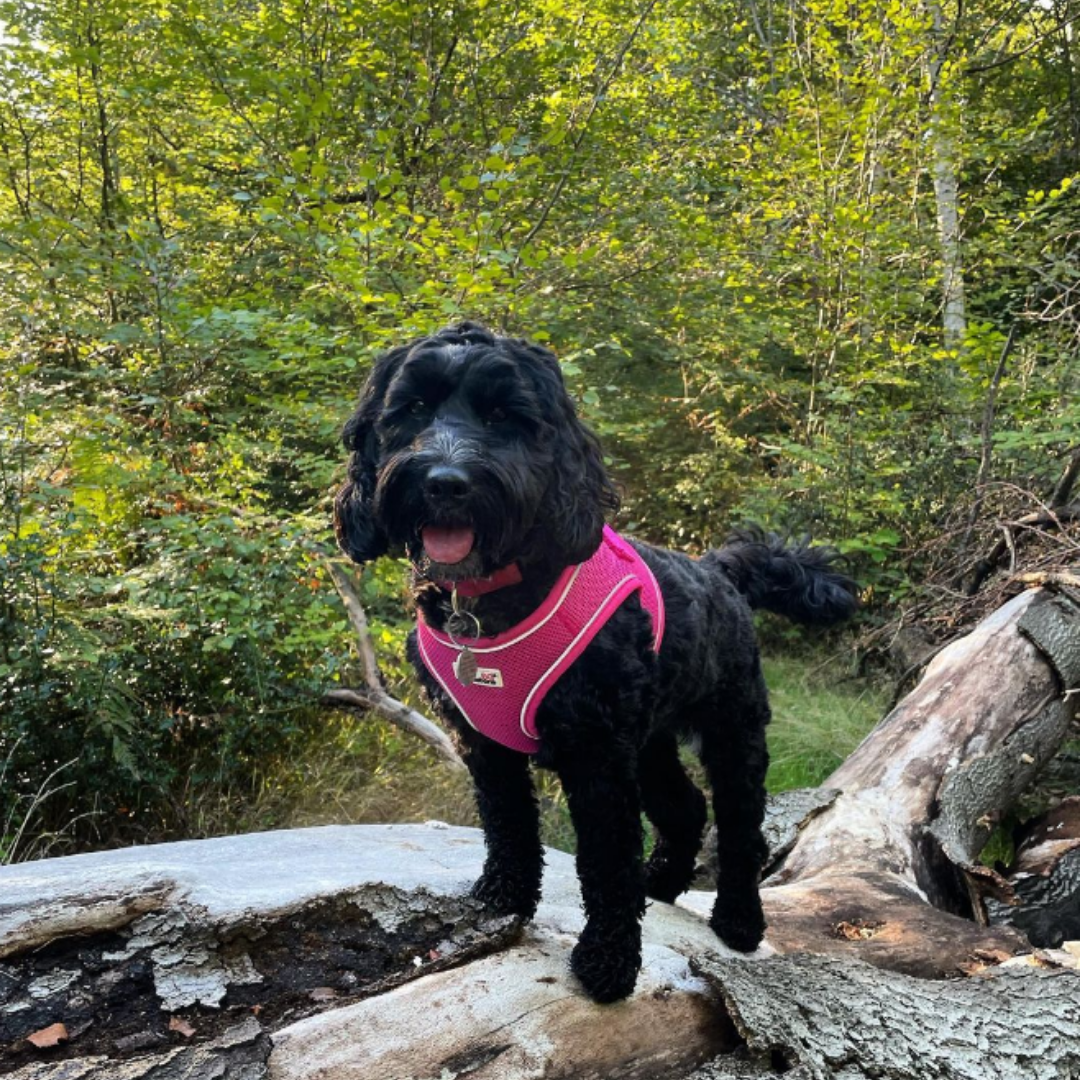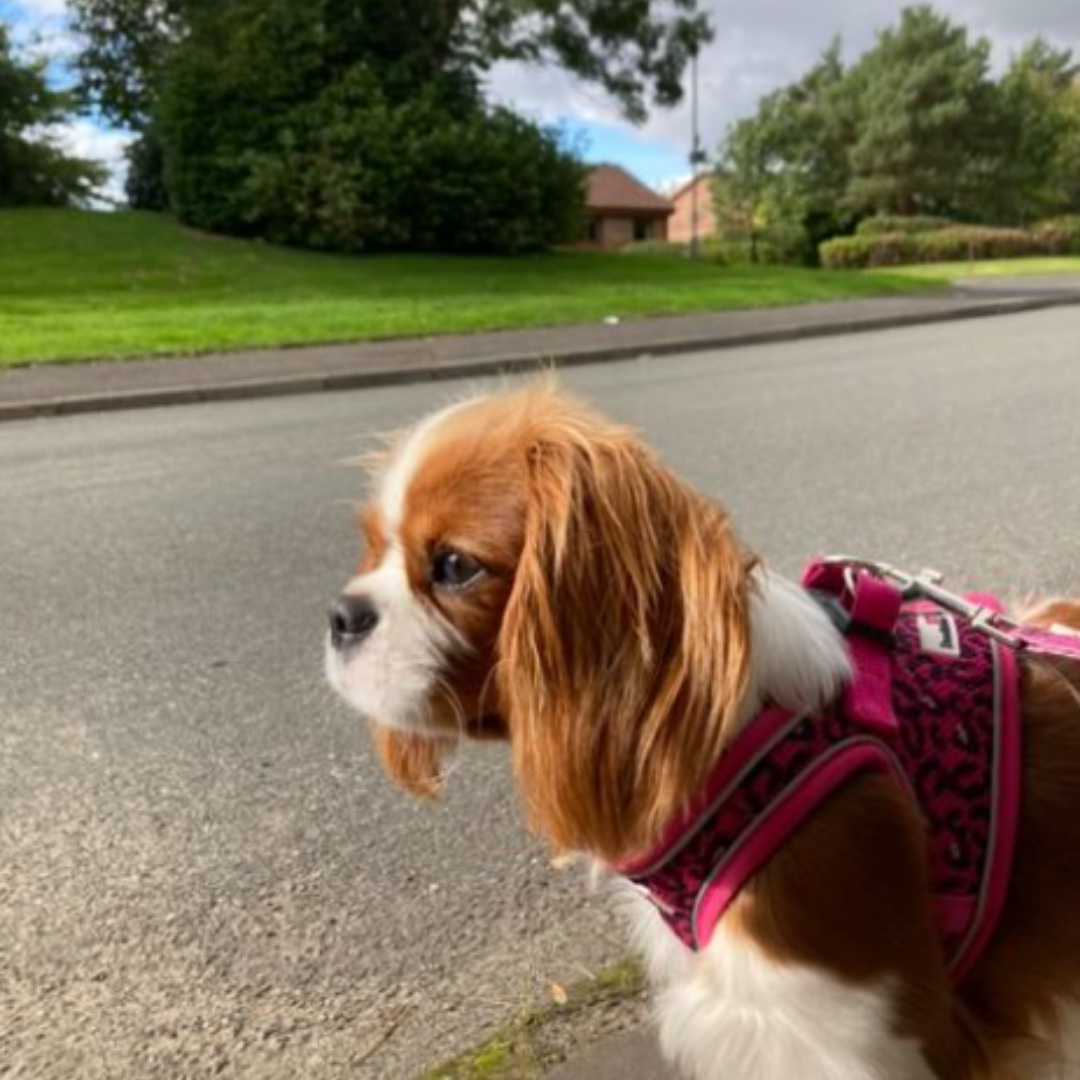Blog
Training your dog
Basic commands
We don’t want to take away your dog’s voice; but they do need to understand and obey yours!
During this part of training, ‘repeat, reward, reinforce’ will be your new motto to live by! When a dog does well in training, give them a treat or their favourite toy to play with, and that way, their behaviour should be reinforced and they will remember it quicker next time.
Some people prefer to enrol their puppy in obedience classes, but it is still useful to know the basics so you can practice at home.
Training a dog to sit
Start by holding a treat near your dog’s nose. Lift your hand up and backwards. This way your dog has to raise their head to follow your hand, and their bottom will automatically go down. Praise them when they do this, and give them the treat. Pairing this with saying “sit”, will reinforce the action quickly. As your dog begins to learn the process, only give them the treat after they’ve actually sat down.
Training a dog to lie down
Begin with your dog in sit position. Hold a treat in front of their nose, say “down” and move the treat to the floor between their paws, and cover it with your hand. Your dog’s head will follow the treat until they are in a lying down position. Praise them as they do this, and reward them with the treat.
As with teaching your dog to sit, as they get to grips with this method you can progress. Hold the treat behind your back, with your dog stood up, and say “down”. After a while they will learn that lying down will earn him his treat!
Training a dog to stay
Once your pooch has learned to sit and lie down, they can be taught “stay”. Start by asking your dog to sit or lie down. Then, instead of giving them a treat for doing so, wait for a few seconds and say “stay”, and move a few paces away, repeating “stay” and wait again. If the dog stays, walk back and reward them, if they don’t stay, then don’t give them the treat.
Training a dog to come (your dog needs to know its name for this one!)
Training your dog this skill will allow both you and it more freedom on walks, as you will have more confidence when your dog is not on it’s lead!
You should reinforce this, your dog checking in with you is always a good thing, by praising it when they come to see you, regardless of whether you called them or not. Stand a few metres away from your dog, and call their name and say “come!”, and show that you have a reward – either a treat or a favourite toy! As they step closer to you, continue to give them praise, and give them a treat when they arrive at you. Gradually increase the distance that you ask your dog to come to you from.
It is worth remembering that scolding them for taking ages to come to you will only put them off returning to you next time; it won’t make them come quicker!
Pulling on a lead
Walkies is your dog’s favourite time of the day! We love taking our dogs for walks, but it becomes less fun if they’re the ones walking you. You need to train your pooch to walk to heel; this is easier if you teach them from the get-go! Training your puppy this skill is also important to teach them who is in charge, and will allow you to walk your dog without a lead in the future, should you wish.
You should aim to do this process a few times a day, and could even practice around your garden until your puppy’s injections have been completed.
- To begin, walk your puppy with an extended lead fixed to his collar, holding it like a normal lead so the rest lies on the foor
- As you walk with your puppy, let go of the lead you are holding nearest to it and run to the right, loosening the grip, making sure you are holding the handle of the Rambler retractable lead and call it positively ‘this way!’. As they get used to the comment, the puppy should follow, but if not you can use a very gentle pull
- Repeat this process on the left. You’ll find your puppy begins to heel naturally and the long lead is dragging on the ground
- You may want to keep some puppy treats in a pocket to reward them when they follow your calls
- If you want to let your puppy off the lead when you are out walking they’ll need to know the basic commands of “Come” and “Stay”
House training
At the start, house training your puppy might seem the impossible, but patience here is key. It doesn’t take long for you to start recognising when your puppy needs to do its business!
If they need a poo they will often circle around themselves and sniff their chosen spot – this is your cue to hurry them outside. Taking them to the same spot in your garden each time; this will teach them quicker. It will also be helpful when you take them out last thing at night, as they will learn to realise that you want them to go, even if they aren’t desperate!














